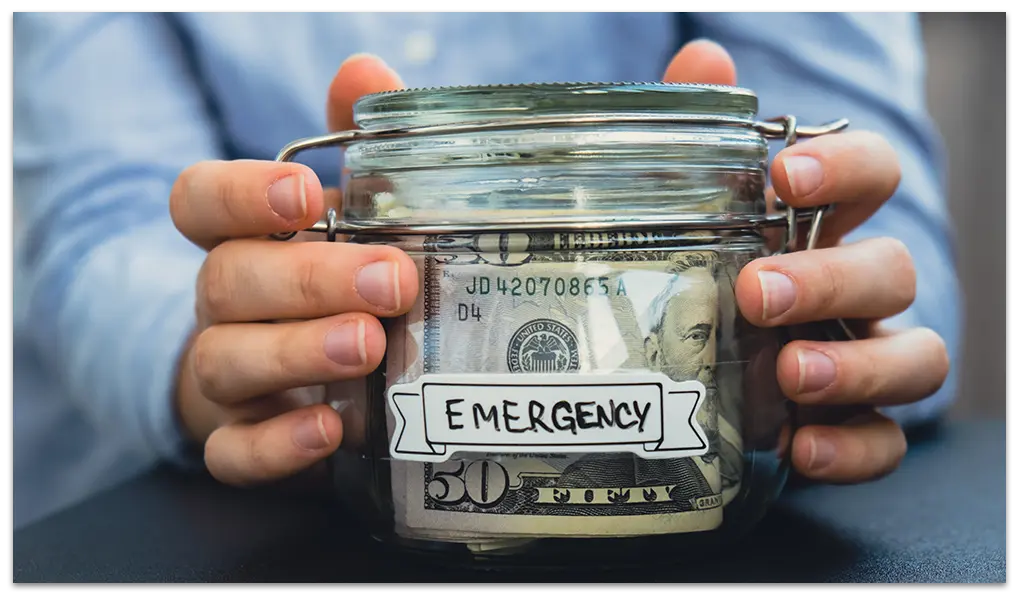
Life is unpredictable, and unexpected expenses can derail even the most carefully crafted financial plans. Whether it’s a sudden medical bill, car repair, a pandemic, or job loss, these surprises can lead to financial stress or, worse, debt. That’s where an emergency fund comes in. It acts as your financial safety net, providing peace of mind and stability when life throws you a curveball.
In this section, let’s explore why an emergency fund is essential, how to build one, and tips to ensure it’s always ready when you need it.
Why an Emergency Fund Matters
An emergency fund isn’t just a nice-to-have—it’s a cornerstone of financial independence. Without one, you might find yourself turning to high-interest credit cards or loans to cover unexpected expenses, which can quickly spiral into unmanageable debt.
Having a dedicated fund for emergencies means you can handle life’s surprises without compromising your financial goals. It’s the buffer that allows you to stay on track, even in the face of uncertainty.
How Much Should You Save?
The general rule of thumb is to save three to six months’ worth of living expenses. This amount provides a cushion for most unexpected situations, such as temporary unemployment or major repairs.
- If you’re single or have a stable job, three months might suffice.
- If you have dependents or work in a volatile industry, aim for six months or more.
If you’re a European resident like I am, have a permanent employment and access to free universal healthcare, 3 months is most probably enough for you. Start by calculating your essential monthly expenses, including rent/mortgage, utilities, groceries, transportation, insurance, and minimum debt payments. Multiply this total by the number of months you want to cover to set your target.
Steps to Build Your Emergency Fund
- Set a Realistic Goal
Break your target amount into smaller, achievable milestones. For instance, aim to save 10% of your salary every month as a starter emergency fund, then work toward your full goal over time. - Create a Dedicated Account
Keep your emergency fund separate from your regular checking or savings accounts. A high-yield savings account is a great option—it offers easy access to your money while earning interest. - Automate Your Savings
Make saving effortless by setting up automatic transfers from your checking account to your emergency fund. Treat it like any other bill to ensure consistency. - Cut Back and Redirect
Identify areas where you can temporarily reduce spending—like dining out, subscriptions, or entertainment—and funnel those savings into your emergency fund. - Boost Your Income
Consider taking on a side hustle, freelancing, or selling unused items to accelerate your savings. Every extra dollar/euro or whatever your currency is gets you closer to your goal. Although this step requires extra time and effort compared to the previous ones.
Tips to Maintain Your Fund
- Use It Only for True Emergencies: Avoid dipping into your fund for non-urgent expenses like vacations or shopping. Reserve it for genuine emergencies.
- Replenish After Use: If you withdraw from your fund, prioritize rebuilding it as soon as possible.
- Adjust as Needed: Review your fund periodically to ensure it still meets your needs, especially if your expenses or lifestyle change.
The Peace of Mind You Deserve
Building an emergency fund may take time and effort, but the security it provides is priceless. It’s the foundation that allows you to take risks, pursue opportunities, and navigate challenges without fear of financial ruin. It was this powerful concept that allowed me to take a 4-month sabbatical and pursue my entrepreneurial ideas.
Start small, stay consistent, and watch your fund grow. With a solid emergency fund in place, you’ll be one step closer to achieving financial independence and living life on your own terms. In the next section, we’ll explore the exciting world of investing and how it can help you grow your wealth. Stay tuned!
